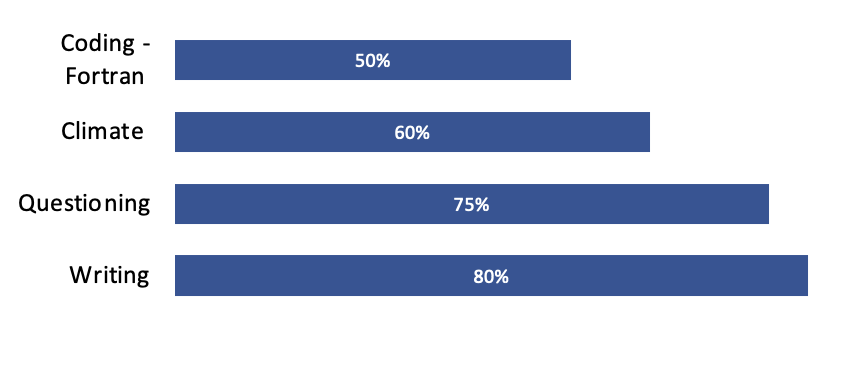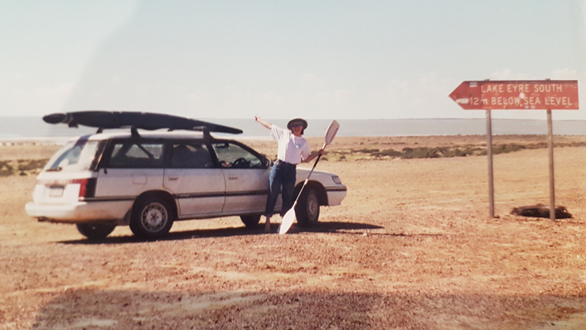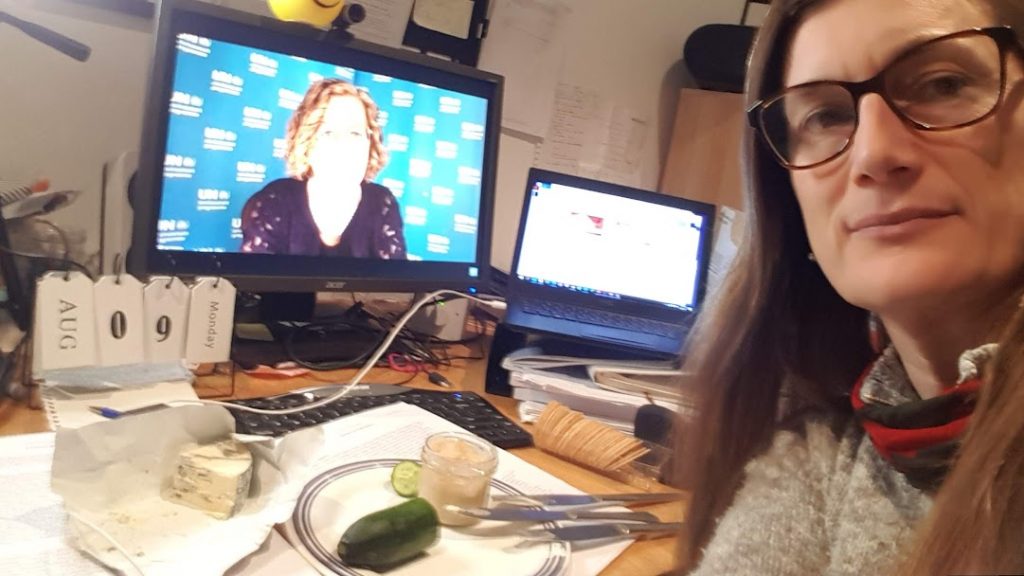International Girls in ICT Day is a global movement encouraging girls and young women to pursue science, technology, engineering, art and math (STEAM) education and careers.
Cisco hosts events through our Women Rock-IT program, which began in 2014 and has seen more than two million participants, with over half enrolling in one of our Cisco Networking Academy courses as a result.
Join us on April 27 to hear from women who are working on critical environmental issues like climate change and learn how developing digital skills now can help protect our planet!
This is a guest blog from Dr Pandora Hope, a Principal Climate Scientist at the Bureau of Meteorology in Australia, and one of six guest speakers on Girls in ICT Day. Dr Hope will discuss how climate data reveals the human influence on our extreme weather and share her passion for climate knowledge, the outdoors and her expertise in climate models.
Starting out

I studied science and mathematics at school and university. The options were wide — I could study biology, physics, chemistry, psychology — and I did. I was interested in how our bodies worked, so I majored in physiology. Still, something was missing. I missed maths. So the next year, I also majored in applied mathematics. And I discovered maths that could be applied to the real world — how fluid flows, and long equations that could describe our weather.
During my Honours year my supervisor introduced me to the world of climate studies — how can we integrate weather systems together to reveal underlying patterns over the whole Southern Hemisphere? What did those patterns look like in the 1950s? What do they look like now? The study required huge amounts of data from weather stations, and statistics and coding. My Honours thesis was titled “Variability of the Southern Hemisphere atmospheric circulation”, and my Ph.D in 2005 was titled “The weather and climate of Australia at the Last Glacial Maximum”.
Coding
In first year University we all learnt Fortran. And everyone failed the test. I was astonished that everyone (including me) just didn’t “get it”. But somehow over time, as I used coding in my assignments and for my Honours research project, something clicked. Then I couldn’t understand how anyone could not “get it”. It was just there, as obvious as reading.
Years later, I was reminded of my process of learning coding as I watched my children learn to read. At first it was impenetrable. Then, they just “got it”.
When I reflect on the skills I’ve used to do what I do, I wonder how these will change over the coming years?

Early career
I loved thinking of ways to code up solutions to novel questions, interrogating data to explore the signals that we might draw from it. Really figuring out what was going on by combining those answers with my understanding of weather systems and the large-scale transfer of heat from the tropics to the poles.
In my first job after university undergraduate studies, I was given the opportunity to play with a general circulation model — otherwise known as a global climate model. It was a huge computer program that created weather by solving the equations of motion of air around the globe, and parameterising processes like clouds and rainfall. Fun things I did included:
- Doubling the number of vertical levels up through the atmosphere (and crashed the model — clouds are tricky!).
- Adding a dune-building module to compare with the fixed dunes of Australia, which are indicators of past winds.
- Adding an enormous permanent lake into the arid centre of Australia.
- Blocking evaporation over parts of the ocean to see where our rain derived its water from.
- Altering the temperature gradients across the tropical Pacific Ocean and moved the winds over Australia north or south.
- Trying to grab as many nodes on the university’s supercomputer as I could. Sometimes at 2 o’clock in the morning.

Building my passion
As fun as it is to “play” in a virtual world, I began to realise that my work had real-world applications in the here and now. Results from my work could help guide policy and make Australia a better place.
When I started work at the Bureau of Meteorology, I was very keen to be part of an operational institution, working with real-life people who had real-life concerns — like running out of water. I worked closely with government departments across southern Australia — where a drying signal emerged in the late 1960s in the west and the late 1990s in the east — to help them understand why, and whether the wet years would return.
Recognition
Along the way, I have been recognized for my efforts — usually as a part of a much larger group. As an Intergovernmental Panel on Climate Change (IPCC) author, IPCC was the co-laureate of the 2022 Gulbenkian Prize for Humanity. Also, the Victorian Climate Initiative received the Australian Water Association Research Innovation Award (Victoria) in 2019, where I was a key lead.
I received a Bureau of Meteorology Australia Day Achievement Medallion in 2018 for outstanding leadership of major projects and representation of the Bureau and Australia at significant national and international forums. And I also received a Bureau of Meteorology Community Award — Positive Working Culture, State of the Climate co-editor 2016.
Interacting with other people in the climate and weather community was a big part of my education — I was a Committee Member for “Women in Australian Weather and Climate Research” from 2013 to 2019. And Chair of Melbourne Centre of Australian Meteorological and Oceanographic Society (AMOS) and Member of AMOS National Council from 2003 to 2005 — despite one member saying I couldn’t be, because I was too young. I initiated and edited the AMOS policy on global warming during that time.

Now
I now work as a Principal Climate Scientist at The Bureau of Meteorology in Australia, which provides daily weather forecasts and multi-week to seasonal forecasts every two days. For research, we have access to major super-computing infrastructures where we can run global forecast experiments to understand the impacts of climate change on extreme weather events.
Working with the IPCC, I trust that my sharing of how we can quantify the human influence on climate trends and extremes will continue to help guide policy on the world stage and make the world a better place.


Thanks for sharing your story Pandora. I too remember struggling to figure out Fortran. During the first semester holidays I remember going home and accessing a real blackboard and working through the text book with chalk notes until it suddenly clicked.
It is so interesting to hear your experiments working with models, I remember similar ‘digital’ experiments looking the influence of evaporation on leaf temperatures by controlling humidity, and how we could fry leaves in minutes!
Love your story about figuring out the source of rainfall.